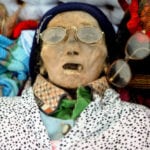 Movies and TV
Movies and TV  Movies and TV
Movies and TV  Creepy
Creepy 10 Eerie & Mysterious Ghosts of the Pacific Coast
 Weird Stuff
Weird Stuff 10 Typos That Accidentally Changed History
 History
History 10 Times Trickery Won Battles
 Technology
Technology 10 Awesome Upgrades to Common Household Items
 Misconceptions
Misconceptions 10 Hilarious (and Totally Wrong) Misconceptions About Childbirth
 Weird Stuff
Weird Stuff 10 Warning Labels That Exist Because Someone Actually Tried It
 Health
Health Ten Confounding New Inventions from the World of Biomedicine
 Creepy
Creepy 10 Death Superstitions That Will Give You the Creeps
 Movies and TV
Movies and TV 10 Movies That Get Elite Jobs Right, According to Experts
 Movies and TV
Movies and TV 10 Most Realistic Medical TV Shows of All Time
 Creepy
Creepy 10 Eerie & Mysterious Ghosts of the Pacific Coast
 Weird Stuff
Weird Stuff 10 Typos That Accidentally Changed History
Who's Behind Listverse?

Jamie Frater
Head Editor
Jamie founded Listverse due to an insatiable desire to share fascinating, obscure, and bizarre facts. He has been a guest speaker on numerous national radio and television stations and is a five time published author.
More About Us History
History 10 Times Trickery Won Battles
 Technology
Technology 10 Awesome Upgrades to Common Household Items
 Misconceptions
Misconceptions 10 Hilarious (and Totally Wrong) Misconceptions About Childbirth
 Weird Stuff
Weird Stuff 10 Warning Labels That Exist Because Someone Actually Tried It
 Health
Health Ten Confounding New Inventions from the World of Biomedicine
 Creepy
Creepy 10 Death Superstitions That Will Give You the Creeps
 Movies and TV
Movies and TV 10 Movies That Get Elite Jobs Right, According to Experts
10 Obscure Films Immortalized For All The Wrong Reasons
Whenever anyone makes a movie, they have goals in mind, whether it be huge success at the box office or Academy Award recognition. But most of all, they want their film to be remembered. Many films are quickly forgotten and fade into obscurity forever, but some works of cinema manage to cement their place in history because of events no one could have predicted.
10Clownhouse (1989)
Horror Film Made Infamous By Child Molestation
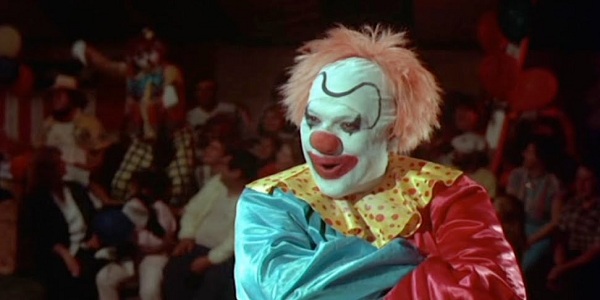
One of the biggest Hollywood scandals of all time involved director Roman Polanski, who was charged with unlawful sexual intercourse with a 13-year-old girl before fleeing to Europe to avoid serving his prison sentence. There has always been much controversy about Polanski successfully continuing his career overseas, where he managed to capture an Academy Award for Best Director. However, Polanski is not the only director who managed to salvage his career after charges of pedophilia.
In 1989, an aspiring young filmmaker named Victor Salva directed a low-budget horror flick named Clownhouse, which featured a trio of escaped mental patients disguising themselves as clowns in order to terrify three brothers. The film didn’t make much of an impression on its original theatrical release, but became the center of a major scandal after Salva was charged with molesting one of his cast members, 12-year-old Nathan Forrest Winters, during the production. He would be sentenced to three years in prison and forced to register as a sex offender. Remarkably, this incident did not ruin Salva’s career. In fact, his career actually took off!
Shortly after his release, Salva was hired by Buena Vista Pictures, a subsidiary of Disney, to direct the 1995 drama, Powder. Needless to say, Nathan Forest Winters did not hesitate to lead a protest against the studio, encouraging people to boycott a film which was directed by a convicted child molester. In spite of this negative publicity, Salva would continue to find success by returning to the horror genre and directing the Jeepers Creepers films. He continues to work in the industry today, though the specter of what happened during the filming of Clownhouse will always hang over him.
9The Other Side Of Midnight (1977)
Flop Allowed Star Wars To Become A Hit
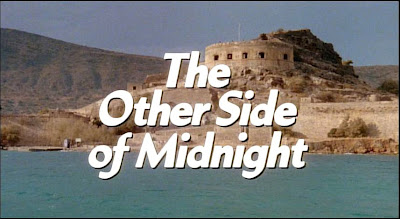
In 1977, one of 20th Century Fox’s most anticipated productions was their screen adaptation of the Sidney Sheldon novel, The Other Side of Midnight. The romantic drama had been a New York Times Best Seller, but in spite of heavy promotion from the studio, the 165-minute film version did not live up to expectations. It was a critical and commercial failure and wound up fading from public consciousness soon after it was released. However, the film did leave one lasting legacy—a little sci-fi flick named Star Wars pretty much owes it its success.
Believe it or not, Star Wars was not one of 20th Century Fox’s most anticipated productions. The studio was certain the film was going to flop and almost considered it to be a lost cause. Since very few theaters had ordered prints of the movie, Fox was forced to make an ultimatum: If the cinemas wanted to show The Other Side of Midnight, they had to show Star Wars as well. This practice was called block booking and had actually been illegal since the ’50s, but since The Other Side of Midnight was such a highly anticipated film, the theaters begrudgingly went along with it. Needless to say, Star Wars wound up breaking box office records while The Other Side of Midnight faded into obscurity. Incidentally, 20th Century Fox would eventually be fined $25,000 for their block booking scheme, but considering how much money Star Wars made for them, it was a very small price to pay.
8Manhattan Melodrama (1934)
Film John Dillinger Saw Before He Was Killed
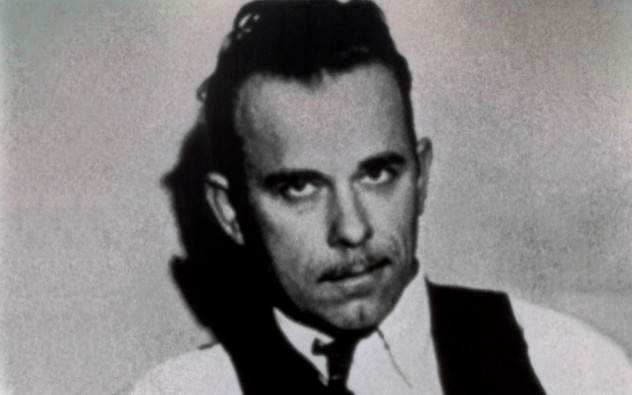
In 1934, MGM released a modestly budgeted crime movie called Manhattan Melodrama, which wound up becoming a surprising success and helped elevate the careers of its three stars, Clark Gable, William Powell, and Myrna Loy. However, the film might not be as well-remembered today if it hadn’t captured the attention of notorious gangster John Dillinger. After robbing more than two dozen banks throughout the US, the charismatic Dillinger had become a very popular outlaw and the country’s most wanted fugitive. But in spite of his notoriety, Dillinger decided to attend a screening of Manhattan Melodrama at the Biograph Theater in Chicago on the evening of July 22.
Little did Dillinger know that federal agents were waiting for him outside. After the movie ended, Dillinger exited the theater, but when he sensed something was wrong, he made a break for the alley and was shot several times. Manhattan Melodrama would forever become known as the movie John Dillinger saw before he was killed, and MGM did not hesitate to publicize this in order to draw bigger crowds. They claimed that Dillinger was willing to risk his life to see the film because he was such a huge Myrna Loy fan. While Loy’s association with the movie helped turn her into a star, she always found this claim distasteful.
7War is Hell (1963)
Movie Where Lee Harvey Oswald Was Captured
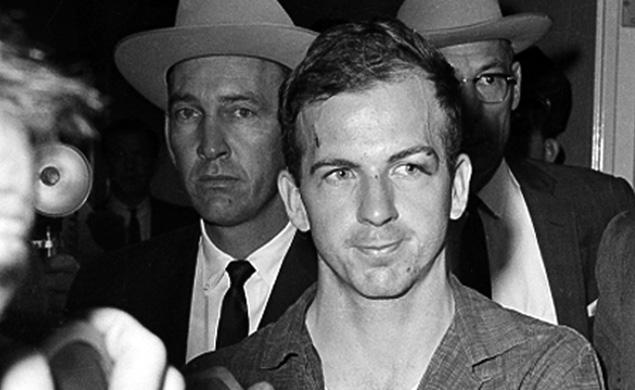 War is Hell was a pretty undistinguished, low-budget feature about the Korean War which played in theaters in 1963. The film might have been doomed for obscurity forever if it hadn’t been booked to play on a double bill with another war film, Cry of Battle, at the Texas Theater in Dallas. On November 22, 1963, a man sneaked into the 1:20 PM show without paying the admission, prompting management to call the police. It turned out this man was none other than Lee Harvey Oswald, who had just assassinated President John F. Kennedy an hour earlier.
War is Hell was a pretty undistinguished, low-budget feature about the Korean War which played in theaters in 1963. The film might have been doomed for obscurity forever if it hadn’t been booked to play on a double bill with another war film, Cry of Battle, at the Texas Theater in Dallas. On November 22, 1963, a man sneaked into the 1:20 PM show without paying the admission, prompting management to call the police. It turned out this man was none other than Lee Harvey Oswald, who had just assassinated President John F. Kennedy an hour earlier.
Police promptly arrived at the theater and arrested Oswald. Over the years, the Texas Theater would be closed, restored, and reopened on numerous occasions before it was eventually declared a Dallas landmark. The theater has never failed to capitalize on its historical significance. On November 22, 2011, they commemorated the anniversary of the Kennedy assassination by holding “JFK Day.” They did as much as possible to recreate the actual events of that day by screening War is Hell at 1:20 PM on a double bill with Cry of Battle. Prices were rolled back to 1963 with $1 admission and the actual chair Oswald sat in was put on display. The theater even managed to generate a little controversy by selling Lee Harvey Oswald T-shirts.
6Promises! Promises! (1963)
Helped Get Hugh Hefner Arrested

Jayne Mansfield was one of Hollywood’s biggest sex symbols, but by 1963, her career was starting to decline. In an attempt to put herself back into the spotlight, Mansfield took a role in a sexploitation comedy called Promises! Promises! and agreed to do some nudity. This would mark the first time a mainstream Hollywood star had ever appeared nude in a film. Naturally, there was some controversy and the movie was banned in some cities and released in an edited, nude-free version in others. Mansfield’s nudity had given an otherwise forgettable film some historical significance, but it wound up garnering even more notoriety after it helped land Playboy founder Hugh Hefner in legal hot water.
In the June 1963 issue of Playboy, Hefner published a series of behind-the-scenes stills showcasing Mansfield in the nude. Shortly thereafter, Hefner was arrested by the Chicago police for selling obscene literature. The arrest seemed somewhat bizarre since Playboy had already been in circulation for a decade at that point, and this was hardly the first time it published nude photographs. However, the prosecution argued that the Mansfield photos were obscene because a fully clothed man was on the bed with her, and the magazine’s captions described her as “writhing about seductively” and “gyrating.” For the only time in his career, Hugh Hefner was put on trial for obscenity charges, but the jury ultimately voted for his acquittal.
5The Message (1977)
Historical Epic Is Part Of Terrorist Demands
 The Message (aka Mohammad, Messenger of God) was a 1977 historical epic which chronicled the life and times of Muhammad, prophet of Islam. The film was a labor of love for its Syrian-American producer-director, Moustapha Akkad, who had to raise financing in the Middle East after Hollywood showed no interest in the project. In spite of these difficulties, The Message was finally completed, and it did manage to garner an Academy Award nomination for Best Original Score. Unfortunately, the film is best remembered for being one of the centerpieces of a real-life hostage crisis.
The Message (aka Mohammad, Messenger of God) was a 1977 historical epic which chronicled the life and times of Muhammad, prophet of Islam. The film was a labor of love for its Syrian-American producer-director, Moustapha Akkad, who had to raise financing in the Middle East after Hollywood showed no interest in the project. In spite of these difficulties, The Message was finally completed, and it did manage to garner an Academy Award nomination for Best Original Score. Unfortunately, the film is best remembered for being one of the centerpieces of a real-life hostage crisis.
On March 9, 1977, 12 gunmen from a Muslim extremist group called the “Hanafi Movement” staged a siege in Washington, D.C., taking 149 people hostage in three separate buildings. The group, which had broken off from the Nation of Islam, had a number of demands, one of which was to ban The Message. They considered the film sacrilegious and demanded that all existing prints be destroyed. The Hanafis had deliberately coordinated the attack to coincide with the film’s American premiere and screenings were brought to a halt while authorities figured out what to do. Two people were killed during the siege, and the stand-off lasted 39 hours before the extremists finally surrendered and the hostages were released. Unfortunately, this whole incident completely overshadowed the film’s theatrical release and it consequently failed to make an impression at the box office.
4Zero Hour! (1957)
Rescued From Obscurity After Being Parodied
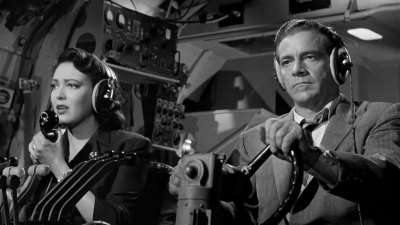
Most of the parody films made today like to satirize recent Hollywood blockbusters or current pop culture trends. However, when Jim Abrahams and Jerry & David Zucker made their groundbreaking 1980 comedy classic, Airplane!, they decided to parody a film most people had never even heard of. Zero Hour! was a 1957 disaster movie about a doomed flight whose crew is overcome with food poisoning, forcing one of the passengers to heroically land the aircraft. After its initial release, Zero Hour! was pretty much forgotten for over 20 years, until the makers of Airplane! just happened to see the film playing on TV one night.
The comedic trio wanted to make a film which parodied the popular disaster films of the 1970s (such as the Airport series), but Zero Hour! was their primary inspiration and Airplane! follows it almost scene-for-scene. Some of the dialogue and melodrama was so corny that the filmmakers knew they could generate a lot of humor by treating it with the utmost seriousness and recycling certain scenes without changing a thing. This new style of humor would help Airplane! become of the most successful and iconic comedies of all time—and as a result, an obscure disaster film from the ’50s wound up getting a second life. Today, it is virtually impossible to watch Zero Hour! without thinking of Airplane!.
(This clip showcases just how similar the two films are.)
3Red Scorpion (1989)
Only Film By Corrupt Lobbyist Jack Abramoff
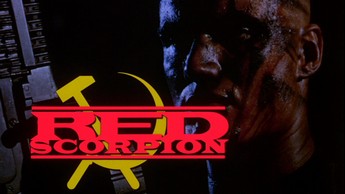
1989 saw the release of an action film named Red Scorpion, starring Dolph Lundgren as a Russian soldier who decides to align himself with anti-Communist African rebels in order to battle his old comrades. The film did not have the smoothest production and went over budget by nearly $10 million. It had an undistinguished run in theaters and was pretty much forgotten about for the next 15 years. But when its producer/co-writer started to make front-page headlines, people began talking about the film again. This is because Red Scorpion happens to be the only film credit of infamous lobbyist Jack Abramoff.
After his filmmaking career went nowhere, Abramoff became a lobbyist in Washington, D.C. and caused one of the biggest scandals in the history of the industry. Abramoff helped bilk $85 million in fees from Native American groups in various casino schemes and earned himself a six-year prison sentence. So it shouldn’t come as any surprise to learn that Abramoff also used unethical tactics during the filming of Red Scorpion. Abramoff chose to shoot the movie in Namibia, a country which was controlled by South Africa’s apartheid government, and the South African Defence Force even lent the production equipment and vehicles. Needless to say, conducting this sort of business with South Africa was seriously frowned upon during the apartheid era. Once word spread, there were protests from anti-apartheid activists, and Warner Bros. decided to pull out of their deal to distribute the film. Little did everyone know that this would be far from the biggest controversy of Jack Abramoff’s career.
2Zyzzyx Road (2006)
Only Grossed $30 At The Box Office

In the summer of 2005, a low-budget thriller was filmed under the awkward title Zyzzyx Road. Despite starring such recognizable names as Katherine Heigl and Tom Sizemore, there was nothing memorable about the movie at all and it seemed destined to become your standard, run-of-the mill, straight-to-DVD release. However, the producers had a different strategy in mind and wanted to exploit a loophole in the Screen Actors Guild agreement. Low-budget films are permitted to pay their actors a lower rate so long as the film gets a domestic theatrical release. For this reason, Zyzzyx Road was booked at the Highland Park Village Theater in Dallas—and would go down in infamy by grossing a grand total of $30 at the box office.
The producers had paid $1,000 to rent the theater for one week. From February 25 until March 2, 2006, the cinema would have a noon screening of Zyzzyx Road, but since there was no advertising for the film, only six people went to see it. Two of these patrons turned out to be the film’s make-up artist and her friend. They both wound up getting a refund, so the movie’s total box office take technically came out to $20. The producers eventually wanted to distribute the movie in foreign markets and release it domestically after Katherine Heigl garnered more fame on the TV show, Grey’s Anatomy. This strategy did not work, however, as Zyzzyx Road was not released on home video in North America for six more years. The worst box office performance of all time is still the film’s biggest legacy.
1The Swinging Cheerleaders (1974)
Key Evidence In Wrongful Conviction Case
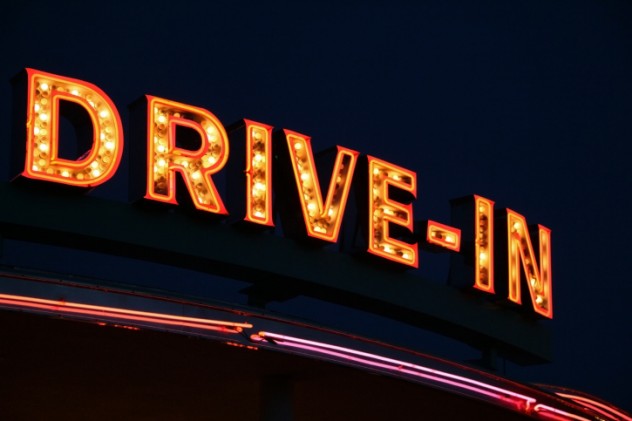
The ultra-thin plot of The Swinging Cheerleaders involves a reporter going undercover with a college cheerleading squad. As a film, there’s nothing to distinguish it from the thousands of other sleazy exploitation flicks which played at drive-in theaters throughout the 1970s. However, The Swinging Cheerleaders gained some significance at the center of the one of the most infamous wrongful conviction cases of all time. On November 27, 1976, a Dallas drifter named Randall Dale Adams hitched a ride with a man named David Harris. That night they both attended a drive-in screening of The Swinging Cheerleaders. After they left, their vehicle was pulled over by a police officer named Robert Wood, and Adams allegedly shot him.
Adams was sentenced to death for the murder, but always maintained his innocence. In 1988, his case was profiled in the documentary, The Thin Blue Line, which suggested that David Harris was the real murderer. The film actually compelled the courts to review the case again and a key detail about The Swinging Cheerleaders helped cast doubt on Adams’s guilt. Adams always claimed that he left the drive-in before the movie was over and that Harris dropped him at his apartment sometime after 10:00 PM. Harris’ story was that he and Adams left the drive-in together after midnight when the movie ended. However, the jury in Adams’ original trial was not told a key piece of information: The drive-in had no midnight showing of The Swinging Cheerleaders that night, so Harris’s story could not be true. After serving 12 years in prison for a crime he didn’t commit, Randall Dale Adams was finally released.
Robin Warder is a budding Canadian screenwriter who has used his encyclopaedic movie knowledge to publish numerous articles at Cracked.com. He is also the co-owner of a pop culture website called The Back Row and recently worked on a sci-fi short film called Jet Ranger of Another Tomorrow. Feel free to contact him here.



